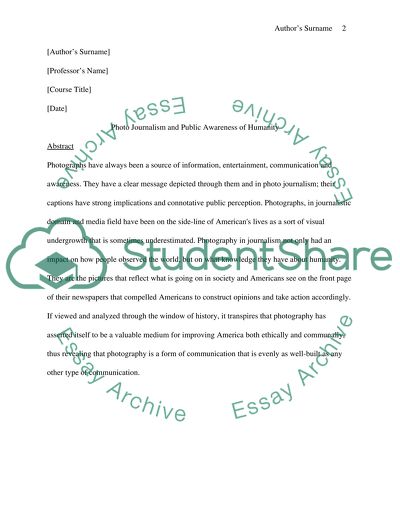Cite this document
(“How does photo Journalism impact the public awareness of humanity Essay”, n.d.)
Retrieved from https://studentshare.org/environmental-studies/1416980-how-does-photo-journalism-impact-the-public
Retrieved from https://studentshare.org/environmental-studies/1416980-how-does-photo-journalism-impact-the-public
(How Does Photo Journalism Impact the Public Awareness of Humanity Essay)
https://studentshare.org/environmental-studies/1416980-how-does-photo-journalism-impact-the-public.
https://studentshare.org/environmental-studies/1416980-how-does-photo-journalism-impact-the-public.
“How Does Photo Journalism Impact the Public Awareness of Humanity Essay”, n.d. https://studentshare.org/environmental-studies/1416980-how-does-photo-journalism-impact-the-public.


